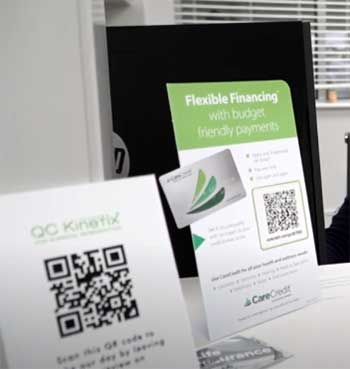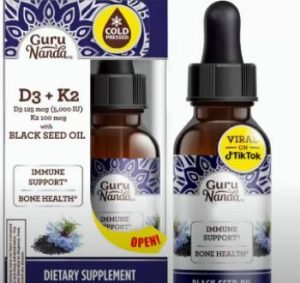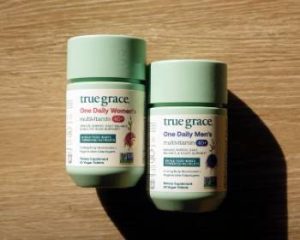Are you frustrated by chronic joint pain that sidelines your everyday life? Then you should consider QC Kinetix. I remember feeling stuck with my nagging knee issues, hesitant about surgery or endless pain medications that never seemed to work.
The day I walked into QC Kinetix, I felt a spark of hope. Before I knew it, I had regained the freedom to walk with ease. In this article, I’ll share my experience, discuss the pros and cons, offer practical tips for maintenance, and compare QC Kinetix with other brands—all while keeping it real, conversational, and easy to understand.
My Personal QC Kinetix Journey

I recall the moment I realized my body was holding me back. I’d wake up in the morning with a stiff knee that seemed to resist every stretch or movement I attempted. Walking up stairs felt like a game of endurance. Instead of embracing each new day, I’d brace myself for throbbing discomfort.
Each time I tried to exercise or even move around with my grandchildren, my joints screamed in protest. When I sought medical advice, I was told that surgery or opioids might be my best bet. But these options scared me.
Surgery meant months of painful recovery, and I had already seen friends struggle with post-surgical complications. On top of that, the idea of relying on medications left me uneasy.
It was at that point I started looking for non-invasive alternatives. Imagine my relief when I first heard a radio ad about QC Kinetix. Though I was initially skeptical, the promise of a non-surgical regenerative medicine solution sparked my curiosity.
I decided to book an appointment. Walking through those doors, I half expected the usual sterile hospital vibe—white walls, a staff too busy to truly listen. To my surprise, the environment felt warm, and everyone seemed genuinely invested in understanding my situation.
I immediately connected with a staff member who was patient and empathetic, someone who actually heard me out instead of just ticking boxes on a chart.
During my first consultation, they explained how their treatments might help restore function in my knee by harnessing my body’s natural healing abilities. It was fascinating—and reassuring—to learn that their approach doesn’t rely heavily on opioids or invasive surgeries.
Instead, they tailor each plan to the individual, focusing on promoting healing through regenerative strategies. When we agreed on a course of treatment, I felt a glimmer of hope. The prospect of a medical team that looks beyond temporary Band-Aids was a game-changer.
After the first treatment, I noticed a subtle yet unmistakable shift. I could walk slightly longer before the ache set in, and everyday tasks didn’t feel as daunting. As I progressed through each procedure, that initial glimmer of hope grew brighter.
My knee’s range of motion improved, and I found myself confidently descending the stairs without clinging to the railing. Now, I won’t claim everything transformed overnight, because real healing takes time. But the steady progress made me a believer. Each visit, I felt validated by caring professionals who encouraged my improvements and addressed my concerns directly.
Moreover, I was inspired by other people’s stories in the waiting area. One individual recounted how their hip and lower back pain had dramatically improved after the first few sessions.
Someone else, who used to limp into the clinic, now walked with a comfortable stride. Hearing these personal victories pushed me further. Knowing they had tackled injuries like torn rotator cuffs and arthritic joints gave me the confidence I needed to stick with my personalized plan.
As I continued my appointments, the staff at QC Kinetix kept me informed about how our bodies can sometimes heal themselves if given the right environment. I was impressed that they openly acknowledged situations where surgery is indeed necessary—transparency that definitely boosted my trust.
And while my story may differ from yours, I can honestly say that I felt empowered and supported at each step.
Why QC Kinetix?

You might be wondering, “What sets QC Kinetix apart from other treatments out there?”
I asked that same question. From my perspective, it’s their holistic, patient-centric approach. They don’t just treat the symptoms; they aim to tackle the underlying issue.
When I weighed my options, I saw plenty of clinics pushing short-term fixes.
In contrast, QC Kinetix explained how their regenerative solutions focus on helping the body repair itself—much like how a small cut scabs over and heals on its own, only more advanced and specifically targeted.
Their team comprises board-certified doctors and physician assistants with expertise in sports medicine, orthopedic medicine, surgery, emergency medicine, geriatrics, and pain management.
Having this range of specialties under one roof felt reassuring.
No matter how unique or severe the issue, there appeared to be someone who had walked that road before. It wasn’t just about a quick injection or a fleeting treatment plan; it was about thorough care, strategic interventions, and a supportive environment.
Non-invasive options are also a major selling point. In some cases, surgery is unavoidable, and they don’t shy away from telling you that. But I appreciate how they explore regenerative therapies before recommending scalpels and stitches.
Considering how a friend of mine went through a botched procedure that led to further complications, I wasn’t eager to go under the knife unless absolutely necessary. QC Kinetix seemed to understand that fear.
They explained how sometimes surgery can cause additional trauma to the body, and how regenerative methods might reduce or eliminate pain without forcing the body to endure a long recovery.
Another factor that stood out was their stance on painkillers. Too many of us have watched someone close fall into the cycle of opioid dependency. The doctors at QC Kinetix share that concern.
They emphasize treatments that aim for genuine, lasting relief rather than numbing the pain temporarily and risking addiction or recurrent injury. By focusing on regenerative methods, they champion an approach designed to fix the problem at its source.
Pros of QC Kinetix

- Non-Invasive and Minimally Invasive Treatments: One of the strongest reasons I chose QC Kinetix was their emphasis on alternatives to surgery. For people like me who worry about a long recovery and the potential complications of going under the knife, this is a massive advantage.
- Skilled and Compassionate Staff: From my first encounter, I felt the staff genuinely cared about my progress. Each treatment was explained in detail, and I was encouraged to ask questions. This level of support made the process less intimidating and more empowering.
- Wide Range of Expertise: Their medical professionals bring diverse backgrounds to the table—sports medicine, emergency care, pain management, and more. This variety assures you that someone on their team likely knows exactly how to address your specific pain.
- Natural Biologic Approaches: Whether you’re dealing with chronic back pain, a shoulder issue, or knee discomfort, QC Kinetix tries to leverage your body’s natural repair systems. This can mean fewer synthetic interventions, which was a huge plus for me.
- Transparent Honesty About Surgery: They’ll tell you if your situation absolutely calls for a surgical route. Knowing they were upfront about this actually built my trust. They aren’t in the business of overselling their treatments if they believe a procedure beyond their scope is needed.
Cons of QC Kinetix
- Not a Magic Bullet: As excited as I was about regenerative treatments, it’s important to note that results will vary. Some might see rapid improvement, while others experience a more gradual curve. Patience and realistic expectations are key.
- Potential Costs: Because regenerative medicine is still considered outside standard protocols in many healthcare systems, you might face out-of-pocket expenses. Without comprehensive insurance coverage, treatments can add up, so it’s important to be prepared financially.
- Requires Commitment: You have to follow through on appointments, lifestyle adjustments, and recommended exercises. Consistency can be challenging, especially if you have a busy schedule. If you’re unable or unwilling to commit, you might not see optimal results.
- Limited Awareness: Regenerative medicine still feels relatively new to many people. Your primary physician might not be fully versed in these treatments, which can lead to confusion when discussing or coordinating care.
- Might Not Address All Cases: Even though QC Kinetix’s solutions worked wonders for me, they won’t be the perfect fix for every individual. Some conditions may be too advanced for regenerative approaches alone, and surgery or other treatments might still be required.
Tips For Long-Term Success
I learned pretty quickly that going for any procedure isn’t enough on its own. You’ve got to maintain your results if you want them to last. I made a few changes in my daily life that I believe have enhanced my progress:
- Regular Low-Impact Exercise: Even as my pain subsided, I didn’t jump straight into intense workouts. Instead, I took things step by step. I started with gentle stretching, light yoga, and swimming to strengthen muscles around my knee and improve flexibility. Focusing on low-impact activities, like elliptical training or biking, can prevent undue stress on healing joints.
- Proper Nutrition: Your body needs the right nutrients to rebuild and maintain healthy tissues. I made an effort to include lean proteins, omega-3 fatty acids, and plenty of fruits and vegetables. Cutting back on sugary treats and processed food wasn’t easy, but when I saw my energy levels rise, it felt worth it.
- Consistent Follow-Ups: QC Kinetix advised me to return for periodic evaluations. Early on, I wondered if these visits would be a hassle. But once I realized how beneficial they were for tracking progress and catching any issues in the early stages, I became more diligent about scheduling.
- Stress Management: Never underestimate the role stress plays in overall health. When I’m under too much pressure, I tend to tense up, which aggravates my knee discomfort. Adopting mindfulness exercises, taking regular breaks at work, and setting realistic goals has helped me feel calmer and contributed to my recovery.
- Smart Movement Practices: It’s tempting to get back to your old pace once you feel relief. I had to practice restraint and ensure I wasn’t lifting heavy objects or twisting my joints in awkward ways. Listening to your body’s signals and practicing proper form in all movements is critical to staying pain-free.
- Adequate Rest: Sometimes the best thing you can do is relax. After a regenerative procedure, your body needs downtime to rebuild. Balancing physical activity with sufficient rest prevents setbacks and encourages steady improvement.
Comparison of QC Kinetix With Other Approaches
When I considered my options, there were a few different paths I could have taken. Let me walk you through my thought process so you can get a better sense of how QC Kinetix stands out:
Traditional Surgery
- Typical Use Case: Surgery is often recommended for severe ligament tears, fractures, or advanced joint degeneration.
- Pros: In certain situations, it’s the only foolproof option. Surgical procedures can fix structural issues that might be impossible to resolve otherwise.
- Cons: A prolonged recovery period is almost guaranteed, coupled with potential complications like infections or scar tissue buildup. Additionally, you might require opioids or other strong medications post-surgery.
- How QC Kinetix Differs: QC Kinetix offers treatment approaches that try to avoid major surgeries, focusing on regenerative solutions that let your body handle the work.
Physical Therapy Alone
- Typical Use Case: For moderate injuries or during rehab after an operation.
- Pros: Non-invasive, supports muscle strengthening, and increases range of motion.
- Cons: Physical therapy doesn’t typically involve interventions that aim to “jump-start” the healing of tissue in the way regenerative medicine might. It can be slow, and if you plateau, you might feel stuck.
- How QC Kinetix Differs: At QC Kinetix, you might receive treatments that complement rehab exercises, potentially accelerating tissue repair and overall recovery.
Chiropractic Care
- Typical Use Case: Spinal adjustments, alignment issues, and musculoskeletal pain management.
- Pros: Often non-invasive, can provide immediate relief from certain types of back pain.
- Cons: May not be enough if the problem involves severe tissue damage or advanced arthritis. Additionally, outcomes can be inconsistent, and it requires frequent visits.
- How QC Kinetix Differs: QC Kinetix addresses the cellular and tissue-level aspects of injury, attempting to encourage your body to heal from the inside out, which might provide a longer-lasting solution than simple adjustments.
In my experience, QC Kinetix straddles a sweet spot between standard medical interventions and less evidence-based home treatments. They incorporate scientifically backed procedures without resorting to drastic surgeries or heavy medication.
That sense of balance is what attracted me in the first place—and why I’m glad I took the leap.
When I dissect my own experience, a few key points stand out:
- Evidence-Based, Yet Evolving: Regenerative therapy is supported by a growing body of research, but it’s still evolving. While many have experienced positive outcomes, much of the evidence is still emerging. If you’re the kind of person who wants thoroughly established, decades-long data, you might feel hesitant.
- Patient Selection Matters: Not everyone is a perfect candidate. QC Kinetix stresses that some cases are beyond their scope. When a condition is too severe, they advocate for alternative interventions like surgery. This honesty underscores their patient-first philosophy
- Tailored Protocols: My personalized plan wasn’t identical to someone else’s. For example, a friend of mine with a shoulder injury had different procedures and timelines. It’s clear that QC Kinetix aims to find what works best for each person, which can increase the likelihood of success.
- Financial Considerations: Regenerative treatments often aren’t covered by insurance. This lack of coverage can be a deal-breaker for some, especially if multiple sessions are needed. An analytical approach should weigh potential benefits against the financial investment.
- Lifestyle Integration: Even the best medical intervention won’t fix everything if you return to unhealthy habits. QC Kinetix encourages integrating exercise, nutrition, and restful sleep. Their approach seems to address overall lifestyle—something I find logical and beneficial.
Personally, the gains in mobility and reduction in pain were worth the investment. However, I do recognize that the field is still growing, and results can differ widely.
My advice: weigh your unique circumstances, ask plenty of questions, and ensure you’re aware of all potential outcomes before deciding if QC Kinetix is right for you.
Also Read: Can Klaudena Seat Cushion Lessen The Pain?
Frequently Asked Questions (FAQ)
I can share my own story: I went in with persistent knee pain, and after following their recommended treatment schedule, I experienced substantial relief and improved mobility. However, individual results can vary. Some people see notable progress after just a few sessions, while others need more treatments and patience. QC Kinetix’s approach is based on regenerative medicine, which aims to support your body’s ability to heal itself. This doesn’t guarantee results for everyone, but many testimonials—mine included—indicate it can be highly effective.
From what I’ve gathered, most insurance plans don’t usually cover regenerative treatments, since they can be viewed as experimental or not part of standard protocols. It’s best to check with your provider directly to confirm your specific coverage. Keep in mind that this might mean out-of-pocket costs. When I underwent my treatment, I had to factor in financial considerations. However, I was willing to make that investment due to the potential long-term benefits and the chance to avoid surgery.
In general, regenerative therapies pose fewer risks than surgery or repeated steroid injections. That said, every medical procedure has potential downsides. Common concerns might include discomfort or swelling at the injection site, mild bruising, or temporary inflammation. QC Kinetix’s approach is largely minimally invasive, which tends to reduce severe complications. The staff is quite transparent about potential outcomes and side effects, so I felt equipped with the information I needed before moving forward. Of course, if you have specific questions or concerns, it’s best to consult with their professionals or seek a second opinion for added peace of mind.
QC Kinetix provides non-surgical, minimally invasive treatments that harness the body’s natural healing abilities to relieve pain and restore function. Their board-certified experts in fields like sports medicine, orthopedics, pain management, and more come together to design personalized solutions for each patient. They focus on injuries like joint pain, torn tendons, and arthritic conditions, offering relief without resorting to heavy medication or invasive surgery. Instead, they employ regenerative therapies that may stimulate tissue repair, helping patients reclaim mobility and day-to-day comfort.
Wrapping Up
If you’re looking for a genuinely caring team and want to explore a less invasive path to address your chronic pain, QC Kinetix could be your answer. Thanks to their regenerative approach, I’ve experienced a level of freedom I’d nearly given up on.
Although no treatment can guarantee perfect results for everyone, this path allowed me to bypass the long recovery that often follows surgery. In my experience, QC Kinetix made a life-changing difference. If you’re open to a fresh perspective on healing, it might just be worth checking out.




So what exactly is it? I see a lot of vague references to “regenerative healing” and “minimally invasive therapies” but nobody talks about what it actually is. I know what surgery is and how it works, same with medications. I don’t have a clear understanding of what this is.
So you can tell your paid for this bias review. Sad this crap goes on when your looking for true results. But I guess when they are sued for and not delivering true results. One can only hope sites like yours are attached.